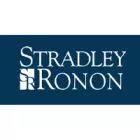The Money Market Fund That "Broke the Dollar"
by Lisa A. Duda, Esquire
The Securities and Exchange Commission ("SEC") recently settled two administrative proceedings by sanctioning the portfolio managers and directors of a money market fund that "broke the dollar" by failing to maintain a $1.00 per share NAV.
Community Bankers Mutual Fund, Inc., an open-end management investment company, offered a single series of shares known as the U.S. Government Money Market Fund (the "Fund"). Community Asset Management, Inc. ("CAM") served as the investment adviser and Prospect Hill Advisers, Inc. ("Prospect") served as the sub-adviser. According to the Fund’s prospectus and statement of additional information, the Fund attempted to maintain a consistent NAV of $1.00 per share. In marketing Fund shares, CAM targeted as investors small community banks and their holding companies. According to the SEC, CAM represented that an investment in the Fund was similar, in safety and yield, to lending money at the Federal funds rate. The Fund’s marketing materials stated that the Fund invested in "the most creditworthy securities available" and permitted investors to "increase income without adding risk."
In May 1993, Prospect began making the day-to-day investment decisions for the Fund. By March 1994, 27.5% of the Fund’s assets were invested in certain adjustable-rate derivative securities, called structured notes. The SEC determined that these structured notes in which the Fund was invested were "unsuitable" for a money market fund due to the high risk that the market prices of the notes would fall substantially below par value.
In March, 1994, the Federal Reserve raised the Federal funds rate. This caused many of the broker-dealers who made a market in the structured notes either to substantially lower their bids for the structured notes, or to discontinue making a market in them altogether. Consequently, both the market value of the notes, as well as the value of the Fund’s portfolio, dropped substantially and the notes became illiquid. However, the SEC found that CAM, with the knowledge and approval of the Board of Directors, continued to market Fund shares claiming they were worth $1.00, and that the Fund would not invest more than 10% of its assets in illiquid securities. The Fund did not disclose that the amount of the structured notes held by the Fund made it unlikely that the Fund would be able to maintain $1.00 per share NAV.
In April, 1994, pursuant to Rule 2a-7, the Fund’s Board amended its pricing procedures to allow the use of fair value pricing. The Board utilized fair value pricing and concluded that the Fund could maintain a claim of $1.00 per share NAV. By the Board’s June meeting, however, fair value pricing had been used for over two months without any recovery in the market quotations for the structured notes. At that June meeting, Prospect concluded that the market value of the structured notes would not revert to par until maturity.
Eventually the Fund liquidated with a total loss to shareholders of $2.5 million, although some investors recovered additional funds through a private lawsuit.
In the first proceeding1, the SEC determined that since the Fund’s Board of Directors knew that a substantial percentage of the Fund’s assets were invested in devalued structured notes, and since the directors had no reasonable basis for believing that the adverse market conditions were temporary, the continued use of the Fund’s fair value pricing method was inappropriate and did not fairly reflect the Fund’s NAV based on market quotations. As a result, the SEC alleged that the Fund’s representations about the character of its portfolio were untrue. The SEC determined that the Fund’s prospectus and statement of additional information were materially misleading with respect to statements about the liquidity of the Fund’s portfolio and the value of the Fund shares being sold. The SEC ordered the directors to pay civil monetary penalties, and to cease and desist from committing or causing any violation, or future violations, under Sections 17(a)(2) and 17(a)(3) of the Securities Act of 1933, and Section 34(b) and Rule 22c-1 of the Investment Company Act of 1940. One director was also suspended from association with any investment company or investment adviser for one year.
In the second proceeding2, the SEC sanctioned two of the Fund’s portfolio managers who caused the Fund to purchase the structured notes. According to the SEC, the portfolio managers violated Section 206(2) of the Investment Advisers Act of 1940 by causing the Fund to purchase, in an amount up to 27.5% of the Fund’s assets, structured notes that were unsuitable. The SEC determined that the portfolio managers failed to assess the risks of holding such notes at a time when the Federal funds rates were increasing. In addition, the SEC found that the portfolio managers violated Section 17(a)(2) and 17(a)(3) of the Securities Act of 1933 by causing the Fund’s representations regarding its portfolio to be untrue as a result of the Fund’s significant investment in the structured notes. The managers were ordered to cease and desist from committing or causing any violation, and any future violation, of the securities laws, and to pay a civil monetary penalty. Finally, subject to certain conditions, the SEC also prohibited both managers from becoming an associated person of any investment adviser or investment company for one year.
1 In the Matter of John E. Backlund, John H. Hankins, Howard L. Peterson, and John G. Guffey, Investment Company Act Rel. No. 23639 (Jan. 11, 1999).
2 In the Matter of Craig S. Vanucci and Brian K. Andrew, Investment Company Act. Rel. No. 23638 (Jan. 11, 1999).
Lisa A. Duda is a partner in the Securities and Investment Company Department at the Philadelphia-based law firm of Stradley, Ronon, Stevens & Young, LLP.
Information contained in this article should not be construed as legal advice or opinion, or as a substitute for the advice of counsel. The enclosed materials are provided for informational and educational purposes

